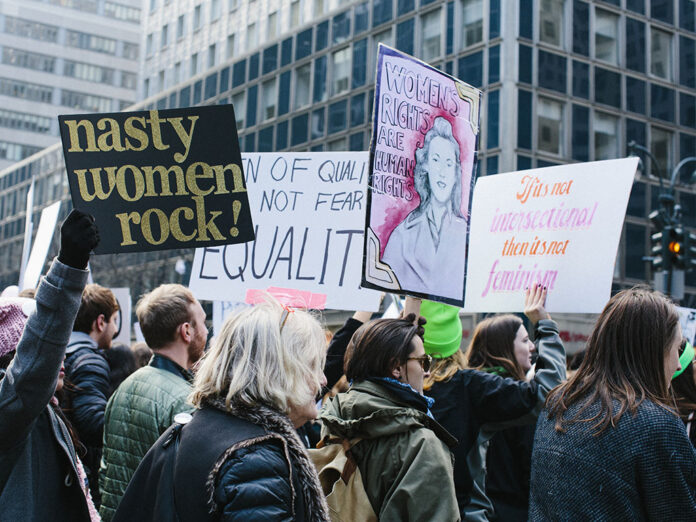The multifaceted nature of feminism has sparked enduring debates within society, precipitating both fervent support and vehement opposition. As we delve into the current state of feminism, it is crucial to unpack the myriad dimensions of this ideological framework that seeks to achieve equality and rights for all genders. While some critics assert that feminism has missed the mark in addressing the needs of contemporary society, an exploration of its history, evolution, and the varying interpretations across socio-cultural landscapes reveals a far more complex narrative.
Historical Context of Feminism: A Journey Through Time
The roots of feminism can be traced back to the suffragette movements of the late 19th and early 20th centuries, wherein early feminists fought vigorously for women’s right to vote, access to education, and legal recognition. This initial wave laid the groundwork for subsequent movements, characterized by an energetic push for gender equality in various spheres, including the workplace and healthcare. The struggle was not monolithic; different factions emerged, each with distinct agendas intertwining issues of race, class, and sexuality.
As we transitioned into the second wave in the 1960s and 1970s, the emphasis shifted to a broader array of issues, including reproductive rights, sexual liberation, and the dismantling of patriarchal structures within society. Figures such as Simone de Beauvoir and Betty Friedan became emblematic of this fight, articulating the frustrations of women who felt constrained by societal expectations. However, it is essential to recognize that while substantial strides were made, some of these achievements were not universally beneficial. Marginalized groups often found their voices eclipsed in mainstream feminist discourse, highlighting an inherent divide within the movement.
Contemporary Feminism: A Paradigm of Intersectionality
In recent decades, the emergence of intersectionality has redefined feminist theory, advocating that women’s experiences are shaped not solely by gender but by a confluence of social identities including race, class, sexual orientation, and ability. This more nuanced approach seeks to amplify the voices of those previously relegated to the periphery, thereby challenging the dominant hegemonic narratives within feminist discourse. Scholars like Kimberlé Crenshaw have articulated the need for a comprehensive understanding of how intersecting identities affect individuals’ experiences of oppression and privilege.
Nonetheless, within this trend lies a divide that has led to accusations that feminism, as a movement, has strayed from its original goals. Critics posit that modern feminism has adopted a myopic focus on certain issues, sidestepping broader systemic concerns that affect diverse populations. This division raises pertinent inquiries—has feminism become overly fragmented? Are current feminist endeavors out of touch with the realities faced by women today?
The Public Perception: A Mixed Bag of Reception
Public perception of feminism is equally dichotomous. On one hand, many celebrate the movement for empowering individuals, fostering dialogue around consent, and advocating for policies that support workplace equity. However, there exists an equally robust counter-narrative that chastises feminist rhetoric as overly aggressive or exclusionary. The term ‘feminazi’ embodies this backlash, encapsulating sentiments of resentment towards perceived extremism within some feminist circles.
Such polarization necessitates an examination of the various manifestations of feminism—what some term ‘radical feminism’ or ‘liberal feminism.’ Radical feminists often espouse a complete overhaul of societal structures to dismantle patriarchy, while liberal feminists focus on policy changes within existing frameworks. This fragmentation complicates collective action and has oftentimes rendered feminists susceptible to criticism that they are purposefully alienating segments of society rather than inclusively advocating for all women.
Bridging the Divide: A Call for Inclusivity
As the feminist movement grapples with these tensions, it becomes imperative to seek pathways toward unity. The necessity for dialogue and inclusivity is paramount; feminists must transcend doctrinal boundaries to forge coalitions that acknowledge the diverse experiences of womanhood. This approach fosters a more comprehensive framework that not only advocates for new policies but also recalibrates public perceptions of feminism as an inherently inclusive movement.
Achieving this requires a concerted effort to embrace inner diversity while maintaining a focused mission—to attain gender equality. Initiatives aimed at unification, education, and outreach can serve as vehicles to redefine and broaden the feminist narrative. By highlighting shared goals across different feminist factions, this could counteract the sense of division that pervades public discussions surrounding feminism.
The Role of Men in Feminism: Allies in the Fight
Another critical component in addressing the perceived failure of feminism is the involvement of men as allies. Historically, the movement has been characterized as a women-only affair, which inadvertently marginalized a substantial segment of the population capable of advocating for gender equality. Engaging men in feminist discourse is vital, as it not only encourages accountability but also fosters a deeper understanding of gender dynamics. This collaborative approach can deconstruct stereotypes surrounding masculinity and cultivate a shared commitment towards equitable societal frameworks.
Furthermore, endorsing male allyship acknowledges that gender equality is not solely a women’s issue; it is a societal imperative. By appealing to their shared humanity and moral sensibility, men can become formidable allies in dismantling sexism and championing feminist goals. This collaboration can transform the perceived “failures” of feminism into a collective success, wherein the movement transcends traditional boundaries and cultivates lasting change.
Looking Ahead: An Optimistic Future for Feminism
The current critique of feminism as a failure invites reflection, yet it also lays the groundwork for evolutionary progress. Rather than dwell on the shortcomings, it is essential to focus on the potential for renewal within the movement. By embracing diversity, fostering dialogue, and encouraging allyship, feminism holds the promise to transcend its historical limitations.
In conclusion, while the debate surrounding the efficacy of feminism is compelling, it is also emblematic of a broader societal struggle for equity. It is within this tension that the true essence of feminism may be illuminated—not as a failed endeavor, but as a dynamic and transformative movement continuously evolving to meet the challenges of contemporary society. The path forward lies in collective commitment, fostering a spirit of inclusivity that resonates beyond individual agendas, creating a harmonious narrative for future generations.





























